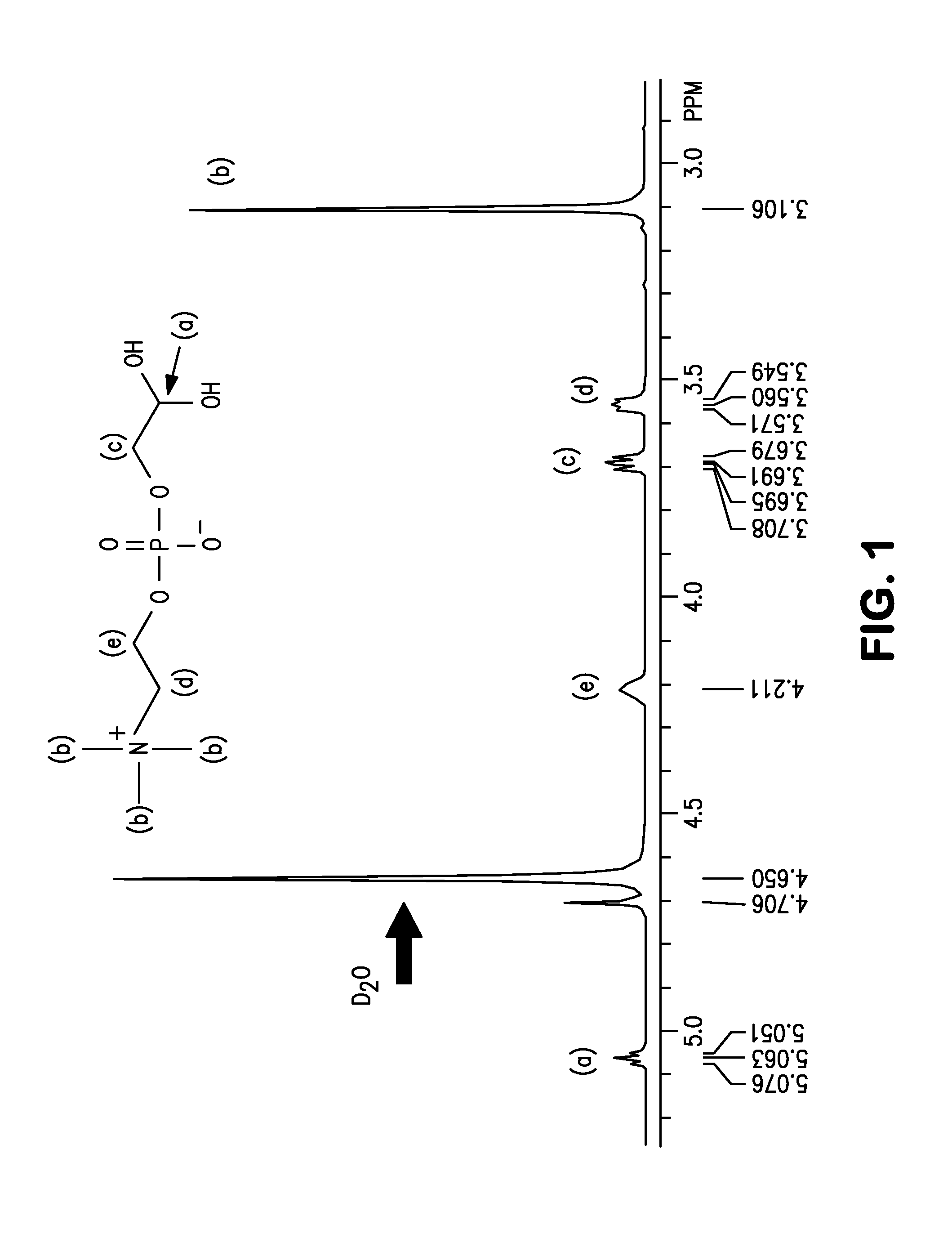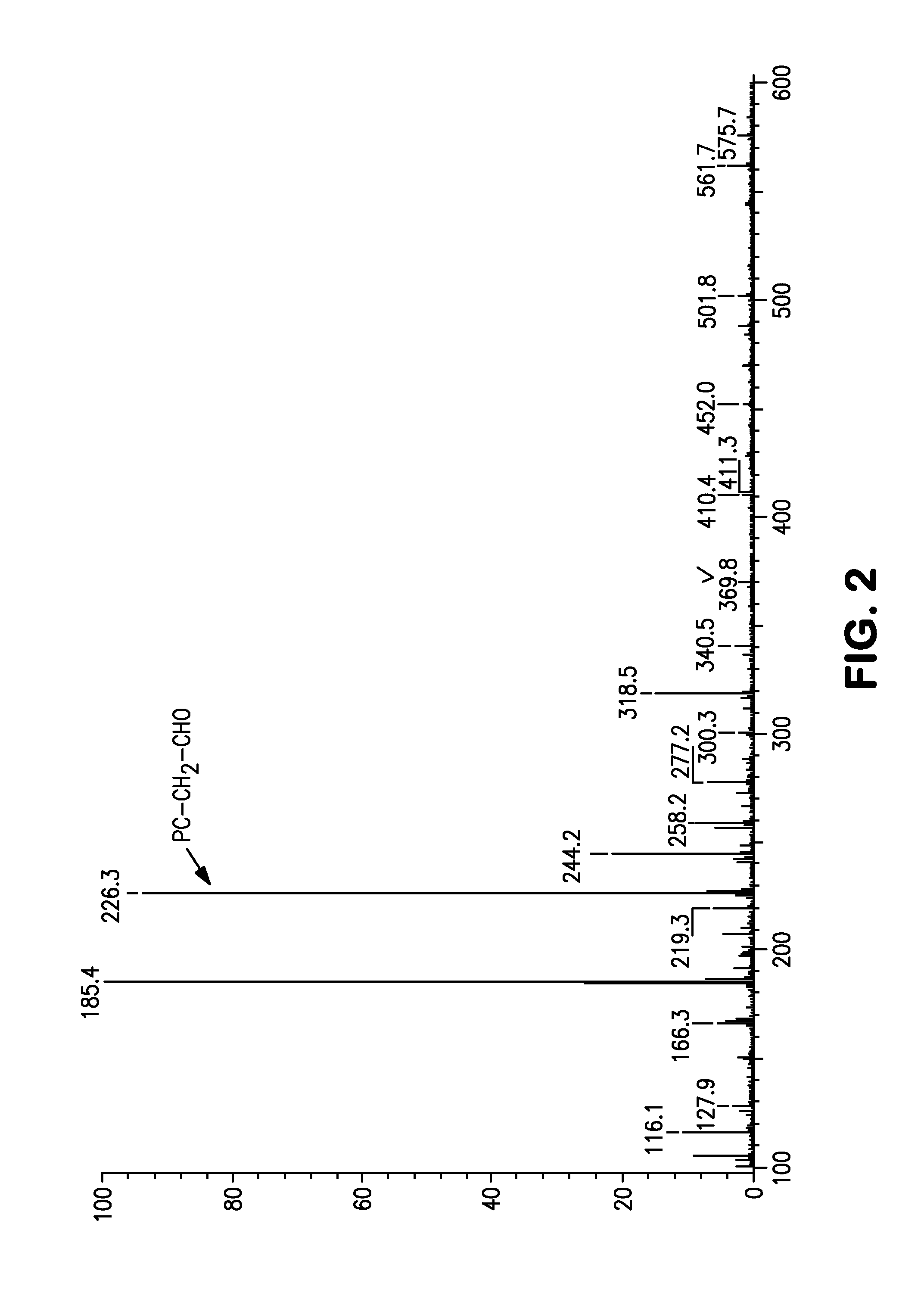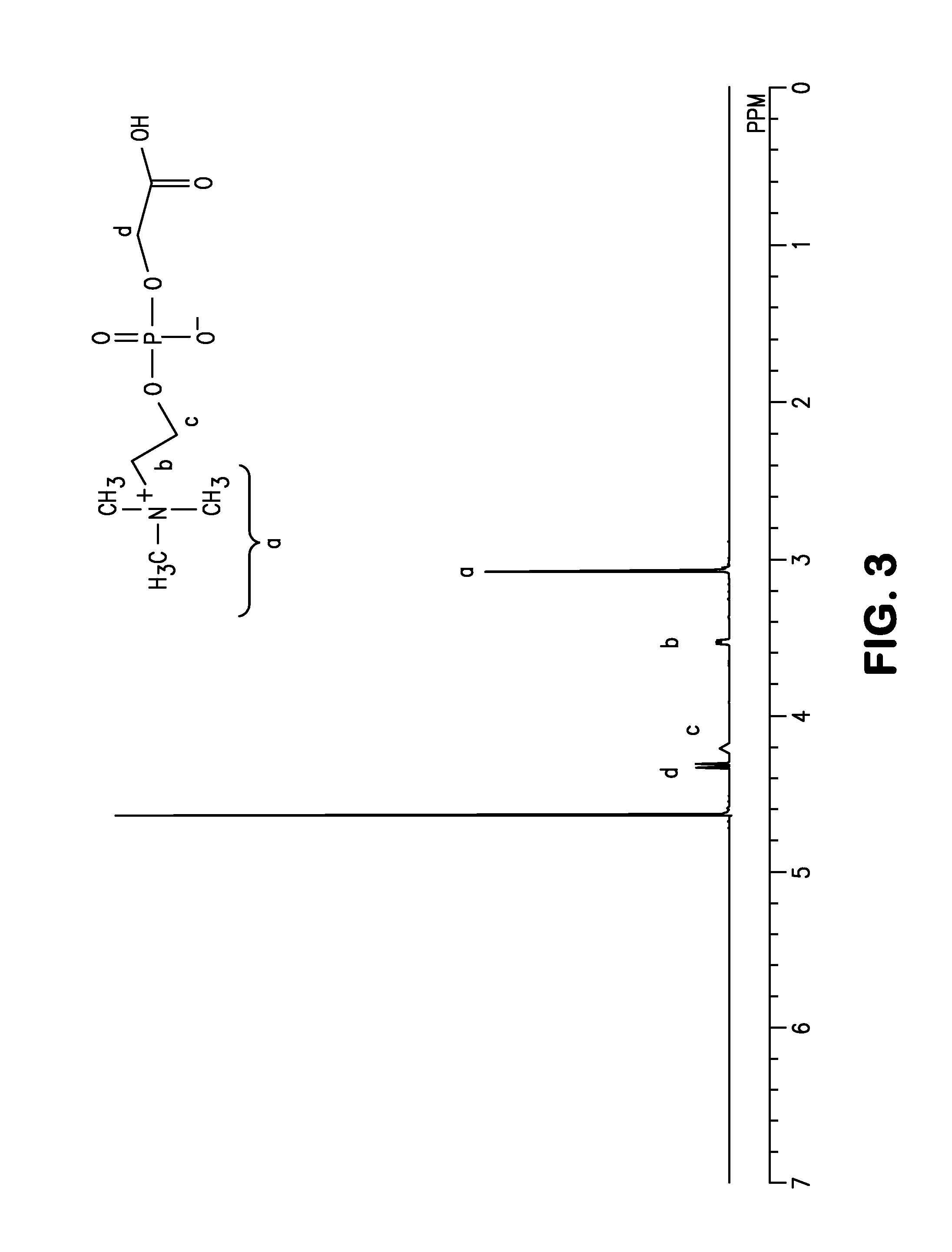Packing Material For Hydrophilic Interaction Chromatography
a technology of hydrophilic interaction and packaging material, which is applied in the direction of separation process, transportation and packaging, ion-exchanger, etc., can solve the problems of difficult analysis using common hydrophobic interaction columns, weak ability to separate between hydrophilic substances, and inability to perform such analysis, so as to prevent a reduction in analysis sensitivity, prevent the effect of reducing the sensitivity of analysis and sufficient retention tim
- Summary
- Abstract
- Description
- Claims
- Application Information
AI Technical Summary
Benefits of technology
Problems solved by technology
Method used
Image
Examples
example 1
Packing Material for Hydrophilic Interaction Chromatography Treated with an Organic Silane Compound Having a Spacer Consisting of an Amide Bond and a Phosphorylcholine Group at the End
[0103]5 g (19.4 mmol) of glycerophosphorylcholine, 17 g (79.7 mmol, 4.1 eq) of sodium periodate (from Wako Pure Chemical Industries, ltd.), 81 mg (0.39 mmol, 0.02 moleq) of ruthenium trichloride (from Wako Pure Chemical Industries, ltd.), 70 g of ion-exchanged water and 30 g of acetonitrile were put into a 200 mL flask. After stirring for two hours at room temperature, filtering was carried out and the solvent was removed from the filtrate. The target substance was extracted from the obtained solid by using methanol, and then methanol was removed to obtain the phosphorylcholine derivative having a carboxyl group represented by formula (10). An NMR spectrum of the compound of formula (10) is shown in FIG. 3 and its mass spectrum is shown in FIG. 4.
(10)
[0104]3 g (12.4 mmol) of the compound of the aforeme...
PUM
| Property | Measurement | Unit |
|---|---|---|
| particle size | aaaaa | aaaaa |
| pore size | aaaaa | aaaaa |
| size | aaaaa | aaaaa |
Abstract
Description
Claims
Application Information
 Login to View More
Login to View More - R&D
- Intellectual Property
- Life Sciences
- Materials
- Tech Scout
- Unparalleled Data Quality
- Higher Quality Content
- 60% Fewer Hallucinations
Browse by: Latest US Patents, China's latest patents, Technical Efficacy Thesaurus, Application Domain, Technology Topic, Popular Technical Reports.
© 2025 PatSnap. All rights reserved.Legal|Privacy policy|Modern Slavery Act Transparency Statement|Sitemap|About US| Contact US: help@patsnap.com



